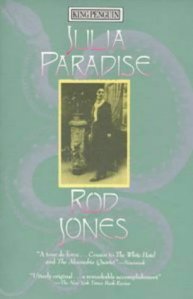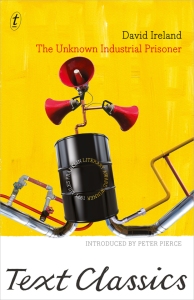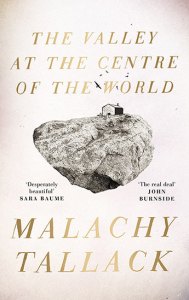
2017, 133 p plus notes.
I suspect that, of all the different types of historians, family historians are probably the most attuned to the world of the midwife. In their family trees they trace those successions of births just two years apart, often over two decades; those births of the baby followed by the death of the mother in the days and weeks afterwards. Most probably, other women were present at these events, but they are largely invisible. It was this invisibility that attracted me to this book.
The author of Mistress of her Profession emphasizes the difficulty of finding these midwives within the sources, but she has managed to locate and name some of them. Having done so, Lesley Potter then aims to
discover not only midwives’ attitudes to midwifery and to understand the kind of midwifery they employed, but also to discover the attitudes of others (patients, doctors, coroners and others in authority) towards them…. the purpose is to bring the colonial midwife to life, to encapsulate her humanness, fraught with all her faults, ideals, values and anxieties: to explain and interpret her past to the present generation. (p. 6)
Her book starts with a case study, one of the eight which separate the chapters. Sarah Ann Hopkins, who boarded the Steadfast from London in 1848 as an emigrant to NSW was a trained midwife, possessing a diploma from Westminster Lying-in Hospital. As a trained midwife, she accepted the temporary position of matron on the Steadfast, working under the supervision of a Dr Read. Seven confinements took place on the ship, and not all had happy outcomes. Twenty-four year old Lydia Lever went into premature labour, triggered by dystenteric diarrhoea (it doesn’t do to think about just how awful that must have been). Her premature baby died, and she died about six weeks later. That same day a second baby was born, this time to 26 year old Jane Calder. The baby died at five days, and the next day Jane Calder’s one year old child died. Twenty year old Matilda Humpreys developed ‘epilepsy’, which was often the diagnosis of eclampsia at the time. Nor did this baby survive. Four of the babies and mothers did survive, and one of these was Sarah Ann Hopkins herself. Just in this one case study, we have writ large the uncertainty of childbirth in the early nineteenth century.
Potter divides the midwives of colonial Sydney into several groups. First there were the convict midwives, many of whom only became midwives after transportation, using midwifery as a way of gaining respectability and a economic foothold in the colony. The second group were free immigrant midwives, often widows, who had been practising as untrained midwives in their own communities prior to immigration. Third, as the century drew on, overseas-trained midwives emigrated for a range of reasons. Finally, there were colonial-trained midwives who appeared at the end of the 19th century, some of whom were registered with the Australasian Trained Nurses Association.
The books starts with Aboriginal birthing. Probably as a result of the curiosity of early officials and naturalists, there are quite detailed descriptions of indigenous births. Although (and because?) the details in these descriptions sprang from the mindset of ‘otherness’ held by their male writers, they provided more information about actual practices in terms of pain relief and rituals than the European sources about European births did.
Where Potter was able to find such information was in the coroners’ inquests, but even in these there is not the detail that she as historian, and I as reader, wanted to know in terms of pain relief and the actual birth. What is interesting is that most 19th century cases involving midwives charged with misdemeanours associated with childbirth did not advance to higher courts (p. 41). Most often the verdict was ‘visitation by God’ or ‘natural causes’, reflecting the ignorance of an all-male jury.
Of more concern was the charge of ‘for want of medical aid’ , which spoke to the authority relationship between male medical doctors and female midwives- a familiar story even today. Midwives and nurses operated in a legal system that did not recognize them or consider them part of the health system. The law had no precedent whereby a midwife at fault could be prosecuted, and as a result several midwives whose care was deficient, escaped sentencing. Likewise, the number of midwife-abortionists is unknown, and here too the courts were reluctant to convict. But as the century progressed, their activities increasingly fell under the purview of the law.
The book traces through the beginnings of maternity care in Sydney, from the Female Factory in Parramatta, through the unsuccessful efforts of Dr Tierney to establish a private lying-in hospital, the development of the Benevolent Asylum, which did not have trained midwives until after 1879 and the gradual increase in private lying-in and maternity homes, especially in the 1890s. Midwifery was a commercial enterprise for women acting independently, and after midwifery training was instituted in the late nineteenth century, employment opportunities within an institutional setting increased. In terms of training, Australia followed the British trends, and midwifery became a certificated qualification, earned through on-the-job training in hospitals. However, as in Britain, midwifery training was kept separate from the training of medical men (although as Potter notes, there were men-midwives). Legislation and registration had to wait until the twentieth century.
I enjoyed the case studies which separated the chapters of these books, which generally illustrate the chapter to which they are attached. They vary in the amount of detail that Potter was able to uncover, and unfortunately some of them are rather bare-bones, factual accounts. But even this highlights the difficulty of the task Potter set for herself.
I found the law chapters in this book the most illuminating, but even they do not really answer my questions about what it was like to give birth in colonial times. Did they sit? stand? lie? What was the attitude towards making noise? And even the most basic question- what did they do with all that boiling water that people were sent off to fetch in the movies? (or was that just a way of keeping them busy?) I recognize the paucity of the sources, but I do wonder if Potter had access to the records once training moved into more institutional settings which might have shed more light on this. Were there textbooks? Did new, more standardized techniques replace traditional, ‘old wives tales’?
Potter has brought many of these women out of invisibility by naming them, but I’m not sure that she actually achieved her aim of bringing them to life or explaining and interpreting them to the present generation. I think that perhaps, given the limitation of the sources, her aim may have been too ambitious, and for me, still unmet.
Sourced from: Yarra Plenty Regional Library.

I have included this book as part of the Australian Women Writers Challenge.


























